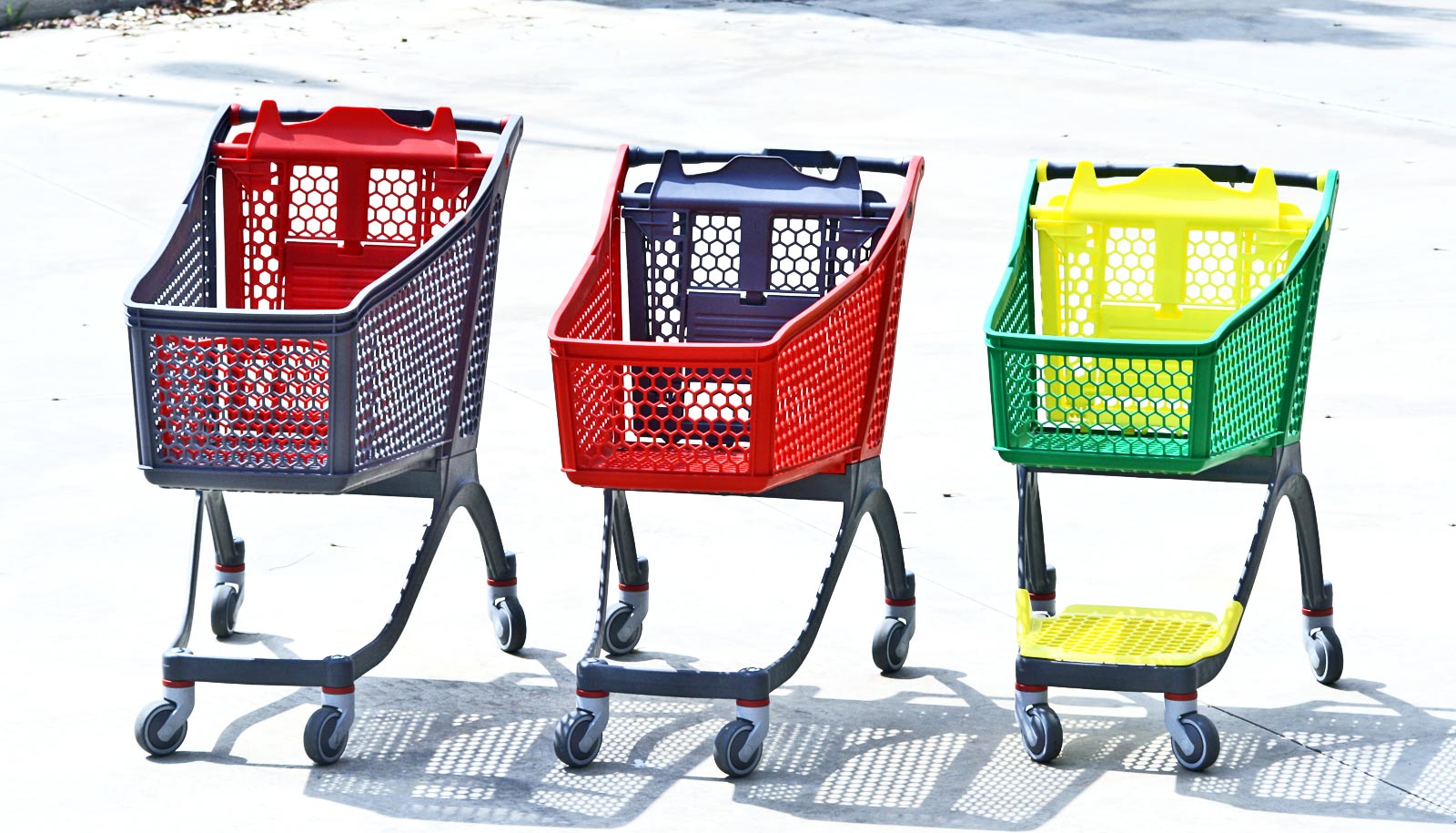The COVID-19 pandemic changed the way grocery stores do business, but how will all these changes affect the amount of climate-altering greenhouse gases generated by grocery shopping?
As shoppers searched for safe and convenient ways to get essential items, grocers adapted to meet increased e-commerce demand. Small, automated warehouses called micro-fulfillment centers—often located within existing stores—enabled grocers to fill pickup orders more quickly, sometimes within an hour of order placement.
At the same time, ongoing advances with autonomous vehicles, robots, and drones promise to create new consumer options in the near future.
Which alternatives produce the most and the least heat-trapping emissions, and what can consumers do to minimize their carbon footprint?
To find out, researchers modeled emissions for a single 36-item grocery basket transported to the customer via dozens of traditional and e-commerce pathways.
Of the various scenarios analyzed by the researchers, in-store shopping by a customer driving an internal-combustion-engine pickup truck produced the most emissions (expressed as kilograms of carbon dioxide equivalents), according to the study published in the journal Environmental Science & Technology.
When customers switched to an electric sedan, SUV, or pickup for in-store shopping, overall greenhouse gas emissions dropped 39% to 51% compared to the same-style internal-combustion vehicle, according to the study.
Other findings include:
- All of the home delivery options had lower emissions than in-store shopping using an internal-combustion vehicle, reflecting the importance of “last-mile” transportation emissions, which refers to the last step of the delivery process.
- For a single item delivered to customers living near a micro-fulfillment center-equipped store, the drone provided the path with the least emissions. Kroger and Walmart are among the companies testing drone delivery of grocery items.
- For the full 36-item basket, home delivery by a suitcase-size “sidewalk robot” did best. Those four- or six-wheeled autonomous machines have a delivery range of 2 miles and are being tested in cities in the United States, China, and Europe, but are not widely available.
- For shoppers who live outside the delivery zone, curbside pickup using an EV sedan helped lower emissions. Shopping at a grocery store with a micro-fulfillment center and combining the grocery trip with other errands—a practice called trip chaining—further achieved reductions.
“This research lays the groundwork for understanding the impact of e-commerce on greenhouse gas emissions produced by the grocery supply chain,” says study senior author Greg Keoleian, director of the Center for Sustainable Systems at the University of Michigan’s School for Environment and Sustainability.
“We also emphasize the important role that consumers can serve in reducing emissions through the use of trip chaining and by making carefully planned grocery orders.”
The study’s “base case” involved in-store shopping with an internal-combustion SUV. Emissions reductions were achieved when customers ordered online and either switched to an electric vehicle (emissions reductions of 18% to 42%); shopped at stores with a micro-fulfillment center (16% to 54% reductions); or used grocery-delivery services (22% to 65% reductions).
Shopping frequency and trip chaining were also important factors for households to consider, according to the researchers. Cutting shopping frequency in half reduced greenhouse gas emissions by 44%, while trip chaining cut emissions by about half, compared with the base case.
While grocers including Kroger use large, automated warehouses called fulfillment centers, several others—including Whole Foods, Meijer, and Albertsons—have invested in micro-fulfillment centers (MFCs).
MFCs can serve as the hub of a hub-and-spoke distribution model. They typically service multiple stores, including the one in which they are housed.
In-store MFCs commonly fill up to 80% of an online grocery order, with the remaining 20% filled by employees picking items from store shelves. MFCs are currently used mainly to fulfill curbside pickup orders placed online.
Greenhouse gas emissions tied to grocery store operation are split mainly between lighting, refrigeration, and the HVAC (heating, ventilation, and air-conditioning) system. In-store MFCs can help reduce those emissions by up to 67% because they are much more efficient at filling online orders than conventional stores, according to the study.
Emission-reduction opportunities identified in the study can be combined with other strategies—such as dietary shifts and reductions in food waste—to guide food-system decarbonization as part of global efforts to achieve Intergovernmental Panel on Climate Change emissions-reduction targets, the researchers say.
The Ford-University of Michigan Alliance Program and the Ford University Research Program supported the work.
Source: University of Michigan



